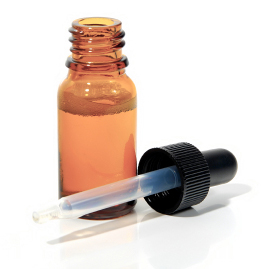Ear Drops - Antifungal
Why has my veterinarian prescribed this medicine?
Antifungal ear drops are generally used to treat a yeast infection that is known as Malassezia pachydermatis. Topical antifungal medications include miconazole, clotrimazole, nystatin and thiabendazole. These medications may be combined with corticosteroids, which are used to decrease inflammation.
How do I give this medication?

"Give this medication for as long as prescribed by your veterinarian, even if it appears the pet's ear is better."
- Instill this medication in your pet's ear(s) as directed by your veterinarian. Read the label carefully.
- Give this medication for as long as prescribed by your veterinarian, even if it appears the pet's ear is better. This will help to ensure the infection is completely cleared up.
- Check the label to determine if the medication needs to be shaken before administration.
- Your veterinarian may request that you clean your pet's ear before applying this medication.
- DO NOT give the pet more medicine than directed.
- DO NOT give the medicine more often than directed.
- Try not to miss giving any doses.
What if I miss giving a dose?
Give the dose as soon as possible. If it is almost time for the next dose, skip the missed dose, and continue with the regular schedule. Do not give the pet two doses at once.
How do I store this medicine?
- Keep this medicine out of reach of children.
- Follow manufacture's recommendations. Generally, this medication is stored in a cool, dry place at room temperature. Store away from heat and direct sunlight.
- Do not store this medicine in the bathroom, near the kitchen sink or in damp places.
Are there any potential side effects?
- These medications are generally well tolerated. If your pet's ear gets worse or becomes red and irritated contact your veterinarian.
- Other side effects may occur. If you notice anything unusual, contact your veterinarian.
What are any possible drug interactions?
- Make sure to tell your veterinarian what other medication you are giving your pet.
- Quite often, your veterinarian may prescribe two different medications, and sometimes a drug interaction may occur. In this case, your veterinarian may vary the dose and/or monitor your pet more closely.
- Contact your veterinarian if you notice any unusual reactions in your pet when different medications are given together.
|
© Copyright 2009 Lifelearn Inc. Used and/or modified with permission under license. |






